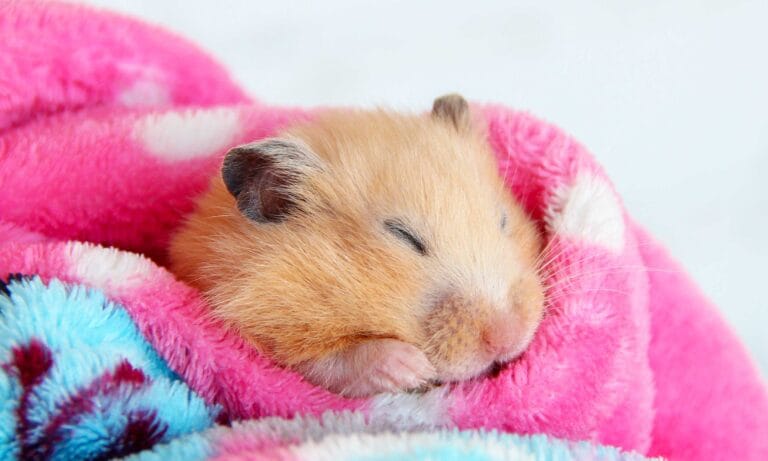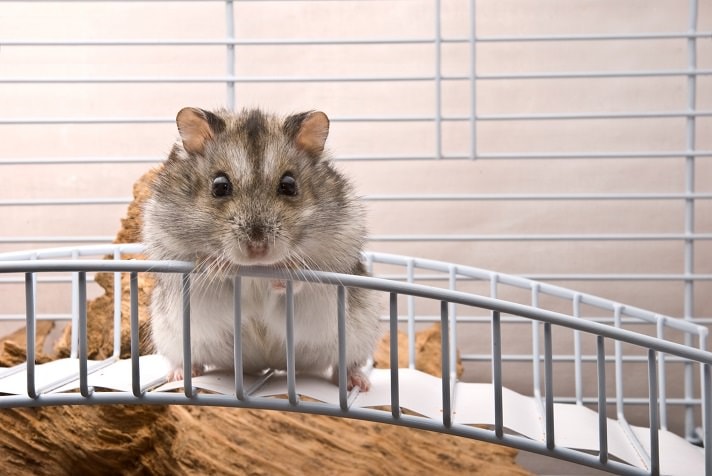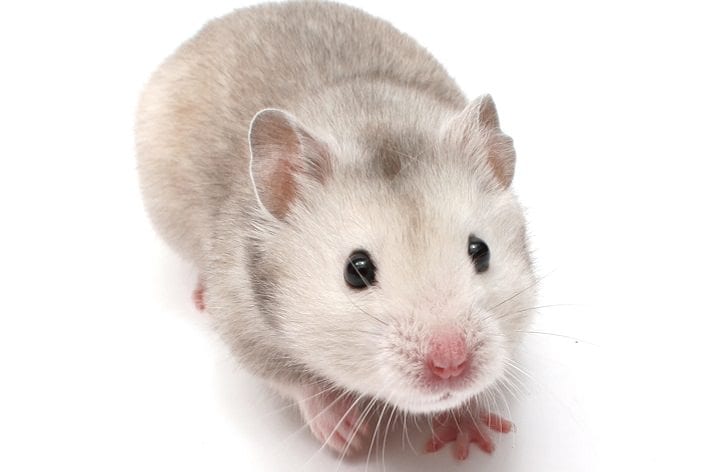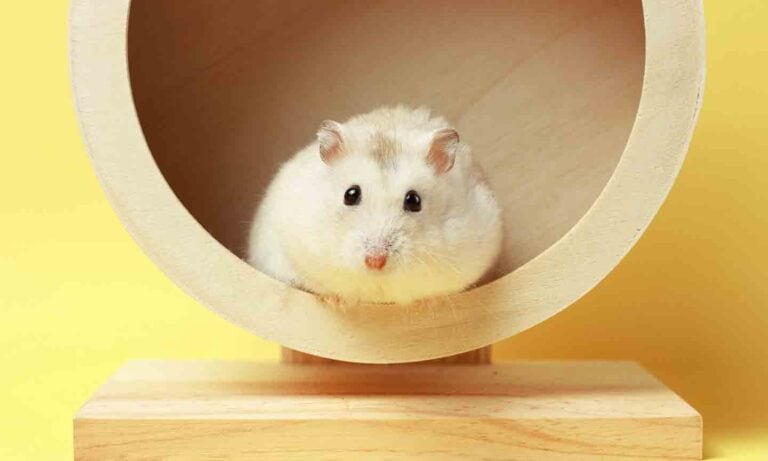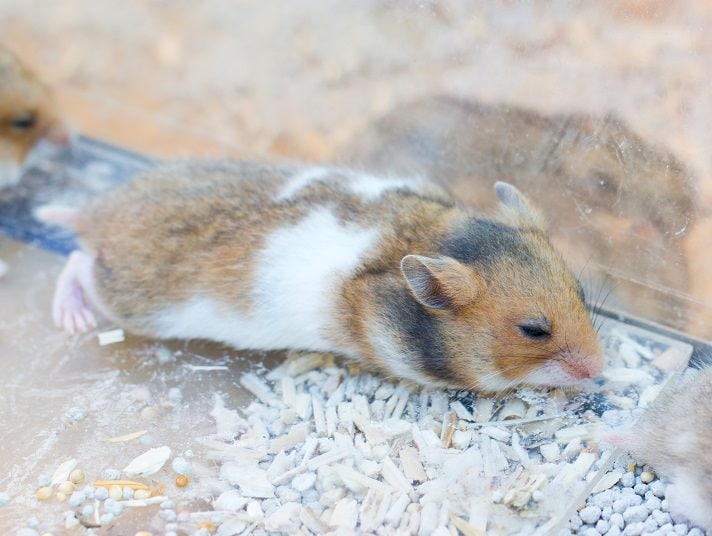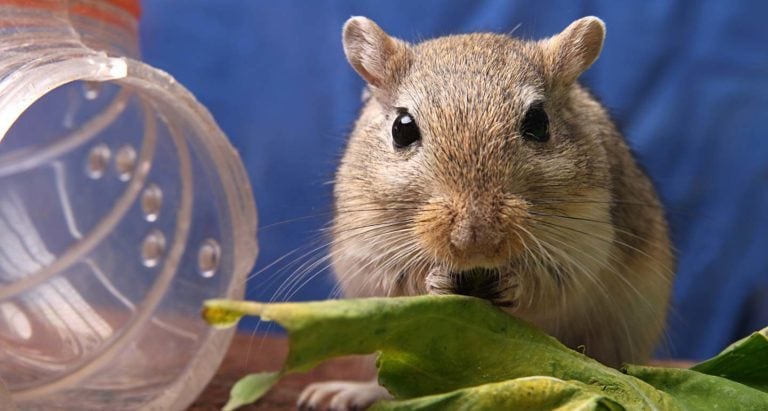Although gerbils and hamsters may appear similar, these popular small pets have distinct personalities. While both can be wonderful companions, their social needs, activity levels, and temperaments might fit some pet parent lifestyles better than others.
Here, we explore gerbils versus hamsters to help narrow down which critter might best suit you.
In This Guide:
Pet Gerbil and Hamster Origins
When choosing a small animal companion, you'll find a wider selection of pet hamster species than gerbils.
Hamsters
Wild hamsters once scurried across the rugged landscapes of southeast Europe, the Middle East, and Asia. Although now a rarity, there are still pockets of wild hamster populations in these regions.
Out of about 30 hamster species, five are commonly offered for adoption as pets:
- Syrian hamster, also known as the golden hamster
- Dwarf hamsters, including the winter white dwarf hamster, Campbell's dwarf hamster
- Roborovski dwarf hamster
- Chinese hamsters
Gerbils
Mongolian gerbils, also known as golden gerbils, are the most common pet gerbils.
Hailing from the deserts of Mongolia and northern China, all pet gerbils descend from just 20 pairs of wild Mongolian gerbils captured in 1935 for breeding at Japan's Kitasato Institute. In 1954, 11 pairs from this colony were imported to the United States.
Gerbil Size vs. Hamster Size
Gerbils and hamsters are popular family pets for a few good reasons, one of which is their compact size. They don't require a ton of space and can be held in the palms of a young child’s hands.
Hamsters vary in size by species, and pet gerbils tend to have longer bodies and tails.
Hamsters
- Syrian hamsters are the largest pet hamsters. Their larger size (about 6–7 inches long and 110–140 grams) makes them easier for children to handle than smaller hamster species. Females are slightly larger than males.
- Winter white dwarf hamsters are typically 2–4 inches long and weigh 70–90 grams.
- Campbell's dwarf hamsters are similar in size to winter whites, measuring 2–4 inches long and weighing 40–60 grams. Males are slightly bigger than females.
- Roborovski dwarf hamsters are the smallest of the common pet hamsters. They typically reach only 1.5–2 inches long and weigh just 20–25 grams.
- Chinese hamsters can reach 4–5 inches in length and weigh 40–45 grams.
Gerbils
Mongolian gerbils are typically 4–7 inches long, with a tail measuring an additional 4–7.5 inches. Despite their longer body length, they tend to weigh less than hamsters (50–60 grams), with males being slightly heavier than females.
Gerbil vs. Hamster Appearance
Gerbils and hamsters are both small rodents, but their subtle differences make each one unique. Here’s how to tell which is which:
- Physique: Gerbils are lean and athletic with long bodies. They’re natural runners and jumpers that navigate their environments with agility. Hamsters, on the other hand, are rounder and generally less athletic.
- Tails: Gerbils have tails that rival the length of their body—up to 7.5 inches long! Their extra-long appendage helps them balance when jumping and climbing. In contrast, hamsters have short, stubby tails. Even the largest pet hamster, the Syrian hamster, has a tail only about ½-inch long.
- Cheeks: Hamsters excel at hoarding food, thanks to their expandable cheek pouches. Gerbils don’t have these large pouches, giving them a narrower, more mouse-like face.
Gerbil Behavior vs. Hamster Behavior
Choosing between a gerbil and a hamster comes down to your preferences, as well as who will be handling the critters. These small pets have big differences in temperaments and behaviors.
Gerbil Temperament
These furry friends live up to their species name—Meriones unguiculatus, which translates to "little clawed warrior"—in terms of activity level, but not aggression. Gerbils are social pets who typically enjoy gentle handling. They rarely bite and aren't territorial; in fact, they prefer having a gerbil buddy with whom they can share their cage.
Gerbils can become quite cuddly with their human companions. When a gerbil is especially happy, you might spot them winking or hear a soft purr.
Hamster Temperament
Hamsters are more independent than gerbils. While some dwarf hamster species might tolerate short periods of interaction, they generally prefer their own space.
This makes them less social than gerbils, although they still require at least 30 minutes of handling a day. Their activity peaks at night because they're nocturnal pets, so you may want to reconsider placing your hamster’s enclosure in a bedroom.
Hamsters are generally territorial and shouldn’t be housed together. The exception is the dwarf species, which may live with same-sex littermates. Rough handling, startling a hamster, or housing two unfamiliar hamsters together can lead to biting.
Gerbil Lifespan vs. Hamster Lifespan
Both the gerbil and hamster have relatively short lifespans, but they’re bound to bring lots of smiles during those years.
Hamsters have an expected lifespan of 1.5–3 years, depending on the species. A gerbil’s lifespan is a bit longer, up to 5 years.
You can help extend the life of your pet by feeding them a commercial gerbil and hamster diet, such as Kaytee® Forti-Diet Pro Health Gerbil & Hamster Food. Diets like these provide all the nutrients, minerals, carbohydrates, fats, and proteins your pet needs. These diets are balanced and fortified properly to meet their nutritional requirements.
Gerbil Cage vs. Hamster Cages
The housing needs of gerbils and hamsters aren't all that different. Here’s what to look for in a gerbil or hamster cage and environment:
- Cage type: Both hamsters and gerbils can be housed in wire cages, but a glass aquarium with a secure, well-ventilated wire top is recommended, like the TRIXIE® Glass Reptile Terrarium, 34-gal. This enclosure prevents chewing, reduces bedding spills and messes, and prevents escapes. If using a wire cage, ensure the bar spacing is no larger than ¾-inch.
- Easy cleaning: Opt for a lightweight cage with a wipeable base and large doors or a removable top that makes removing your pet and cleaning the cage easier. Use a commercial cleaning solution to keep everything looking and smelling fresh.
- Deep base and sides: The cage should hold 4–6 inches of bedding for burrowing. Paper bedding is absorbent and won’t upset your rodent’s stomach if ingested.
- Food and water: Small, sturdy bowls are ideal for food. A leak-proof sipper bottle with a metal tip is best for water.
- Enrichment: Both gerbils and hamsters enjoy sand baths, play tubes and structures, and wheels. Because rodent teeth constantly grow, they need chew toys to gnaw on at all times.
Gerbil vs. Hamster Cage Size
Both gerbils and hamsters appreciate a spacious environment. The following guidelines offer minimum recommended cage sizes, but in general, the larger the habitat, the better.
- Syrian hamsters: Require a minimum of 900 square inches (40" x 22.5" x 24").
- Chinese and dwarf hamsters: Need at least 700 square inches (40" x 17.5" x 24"). Housing a pair of dwarf hamsters together will require a larger cage.
- Gerbils: Need at least 550 square inches (30" x 18" x 12"). If you add another gerbil, double the enclosure size.
While gerbils and hamsters have a few key differences to be aware of, both small pets can make a great addition to your home. Always do your research before adopting a new pet, including finding an exotic pet veterinarian to offer expert care for a gerbil or hamster.
Expert input provided by Melissa Witherell, DVM.
Share:






